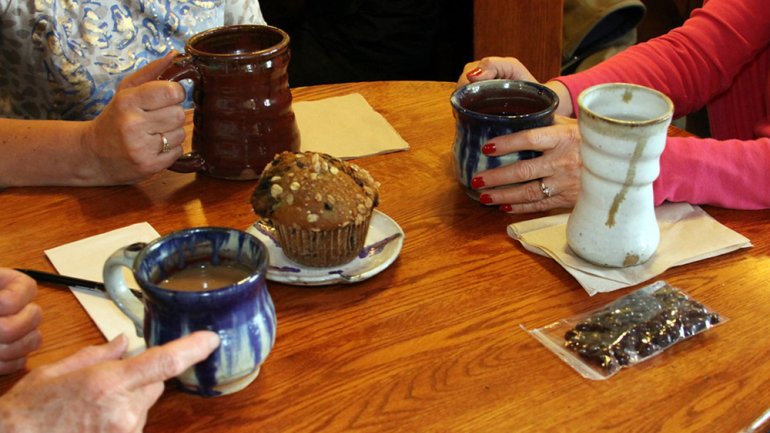A Potter's Journey: Part Four
Writing a Business Plan
Why is the term "starving artist" so prevalent in society? Is it really that difficult for artists to make a living without starving? During college, these questions haunted me. Determined to find answers, I spoke with professional artists in my area. Some went to graduate school and became college professors, but I was wary of those odds. My college commonly received more than 100 applicants per art professor position and only interviewed one or two people. Three local potters never went to graduate school and were still able to practice their craft full-time, but all three of them married nurses.
Unsatisfied with these answers, I shifted my focus to another career path that seemed more financially stable: business. After relentlessly asking my ceramics professor about marketing and selling my pottery, he suggested I take business classes.
All art professors hope their students find successful careers in the arts, but it's wrong to think they should teach students how to make significant amounts of money. Colleges have other resources for that information. As professor John Neely from Utah State University says, "Swimming is a critical life skill, and I think everyone should learn to swim. On the other hand, I'm not going to require it for graduation in ceramics." [The Potter's Cast (podcast), episode 31, 2014]
Paul Marsnik was my professor for one class in management and another in entrepreneurship. He also owned a successful construction business for nine years before becoming a college professor, which gave him first-hand knowledge about owning a small business.
Management classes changed my brain. Image two (above) shows results for an exercise called the "Herrmann Brain Dominance Instrument." Quadrant D was the artistic quadrant, and mine was 10 points higher than any of the 20 other students in the class. This showed me that my art major was serving me well, but I needed to strengthen other areas. Management class pulled out a new side of me that was more structured, calculated, analytical, organized, and controlled.
Next came an entrepreneurship class, which required me to write a 20-page business plan. I wrote 53 pages because I was motivated by the fact that I was actually going to launch my business. While it would be impossible to summarize the entire plan here, I've included five key parts that helped my business plan successfully get funded for an $8,000 small business loan:
- Created an innovative business model. I made pottery for a local restaurant, shown in image seven. This provided a pottery sales avenue without facility or employee costs, which are commonly the two biggest expenses for any business.
- Recorded early sales figures. Keeping track of my undergraduate sales gave me evidence that my art could sell. During my junior and senior years, I sold $5,537 over 10 different occasions, eight of which were on campus.
- Determined an average selling price. Using a coffee mug as an average pot, I estimated that I could make about 3,000 per year, sell them at $20 each, and potentially achieve $60,000 in sales in the first year of business.
- Wrote confidently with supporting data. Looking back, my plan oozed overconfidence, but I always backed my claims with reasonable evidence. For example, renowned potter Warren MacKenzie consistently made 7,000 pots per year, working alone. This was convincing data to justify my 3,000-pot goal for my first year.
- Stayed true to my art. The Local Blend pottery business model naturally evolved out of "Mindscape." The original idea of surrounding people in a gallery with abstract sculptures progressed to surrounding people in a coffee shop with functional pottery.
“The bridge builder’s position is always an uncomfortable one, apt to be shot at from both sides… bridge building may be risky work, but somebody has got to do it because the need is great.” ~Michael Cardew in Pioneer Potter
My goal was to create bridges between sculpture, pottery and sales. Too many artists struggle with money and too few students get good jobs after graduation. My hope is that more potters can create systems that let them make pots – genuinely good pots – and sell enough of them to make a living.

